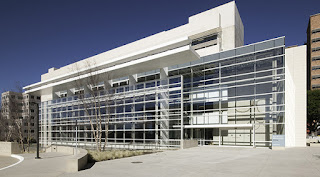(1) Positive Statement
What are you most proud of in your block presentation and/or your senior project? Why?
My activity went by really well. I'm very happy that the audience was very much into the activity I had created and I'm so thankful that Mr. Pang said that it was one of the best he's seen in a long time. I was honestly surprised at how much fun everyone seemed to be having throughout the game.
(2) Questions to Consider
a. What assessment would you give yourself on your block presentation? Use the component contract to defend that assessment.
I think I should get an AE for this presentation because I made sure to include what's required for the presentation and I also had a plethora of props and tools that directly correlate to my topic. I made sure to reference sources and my mentorship throughout my presentation and show where I got my information from. I had a lot of fun presenting and I'm thankful that my audience was very responsive (aka laughed at my jokes). I warmed up as the presentation went along and there was a lot of information I had to run through, so I'm so glad it turned out well in the end.
b. What assessment would you give yourself on your overall senior project? Use the component contract to defend that assessment.
I think I should get an AE for the project this year. I've done all my assignments and I put a lot of work into making sure my other presentations throughout the year were the best I could produce. I spent a lot of time going out and talking to experts in the field of anesthesiology. I wanted to gain insight from several different angles of the topic, so I interviewed several people, shadowed at different hospitals, and looked at other sources (books, articles, journals, videos, documentaries, etc.)
(3) What worked for you in your senior project?
(4) (What didn't work) If you had a time machine, what would you have done differently to improve your senior project?
Even though I was lucky enough to have access to experts like my mentor, I was held back by the fact that I have to be 18 years old to legally shadow under some doctors that I wanted to follow throughout the day. I wanted to follow a couple doctors in the hospitals that they worked in, but because I'm not of legal age yet, I had to pass the opportunity.
Another problem I came across was HIPAA laws, so basically the doctor-patient confidentiality laws.With each patient, I had to ask if I could be present for their procedure and I had to ask if I could take pictures during their procedure. I was lucky enough to be allowed to do so, but it was still something I always had to keep in mind whenever I went to mentorship.
(5) Finding Value
How has the senior project been helpful to you in your future endeavors? Be specific and use examples.
I had always been influenced by my parents' jobs as doctors throughout my life. I had been thinking about pursuing a career in medicine but I was very unsure. This senior project gave me that little push to put myself out there and learn from the experts. This really motivated me to pursue medicine (at least for now) and I had such a fun experience gaining more and more information. Whenever I would go to mentorship, I looked forward to watching cases and seeing how each procedure differed from the last. I found a lot of enjoyment (as morbid as this probably sounds) in seeing the surgeon cut open the patient and being able to see the patient still breathing (their chests would move up and down as they took breaths). The best part is being able to share these stories with others because it's an exciting feeling. I'm mostly thankful for the amazing experiences that I had throughout the year and I feel it was a sort of "leg up" for what I want to do in the future.






































